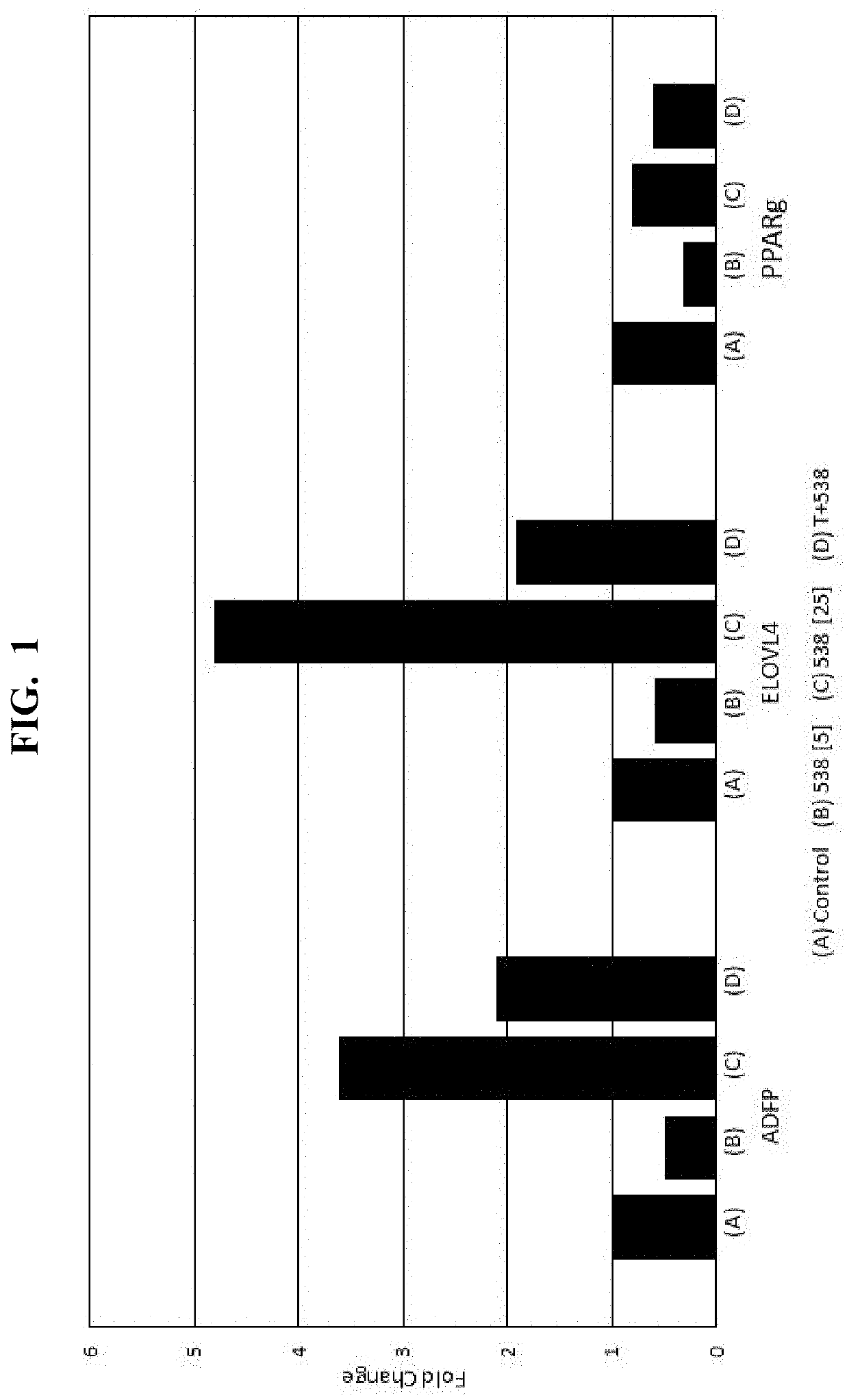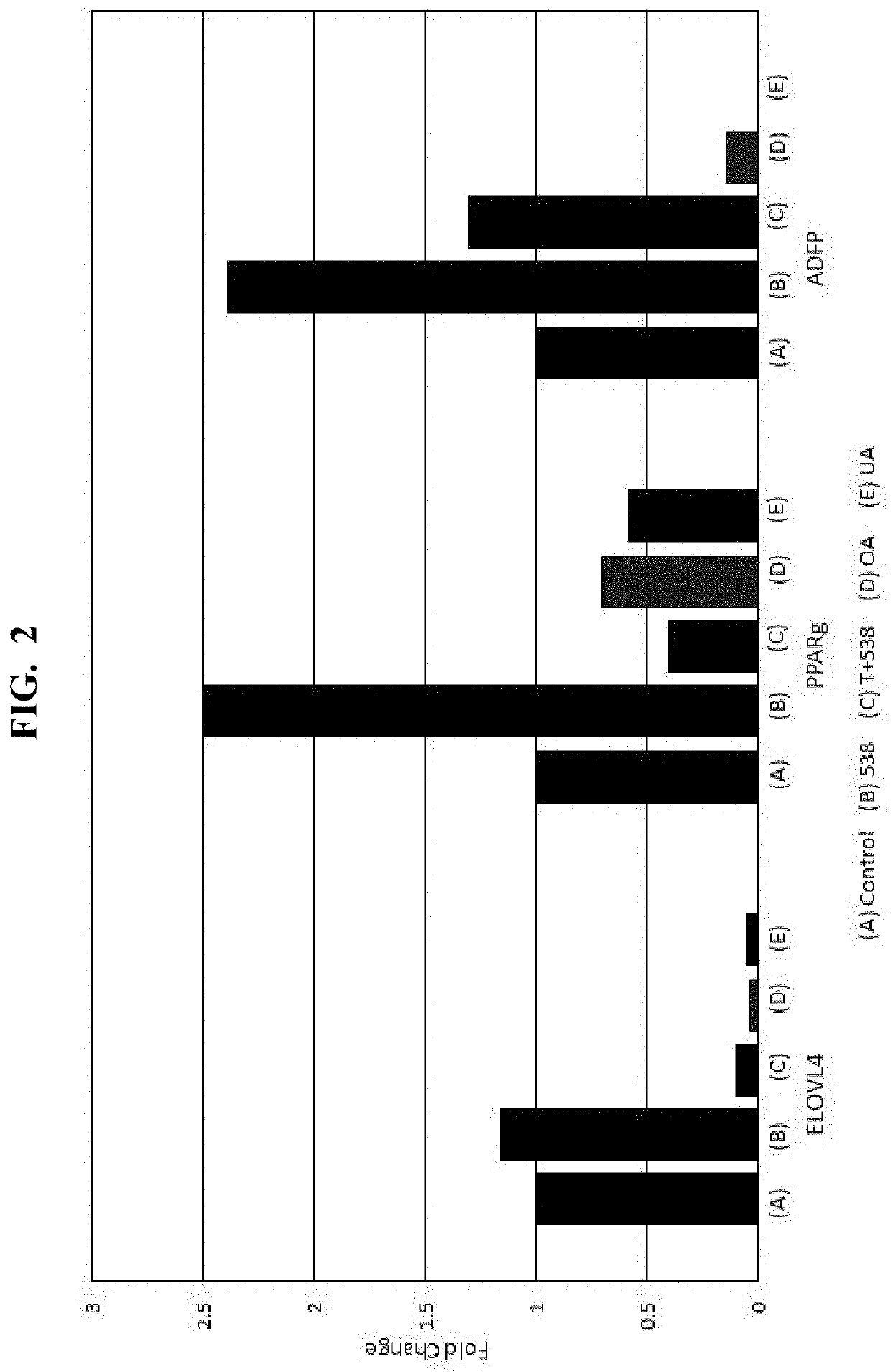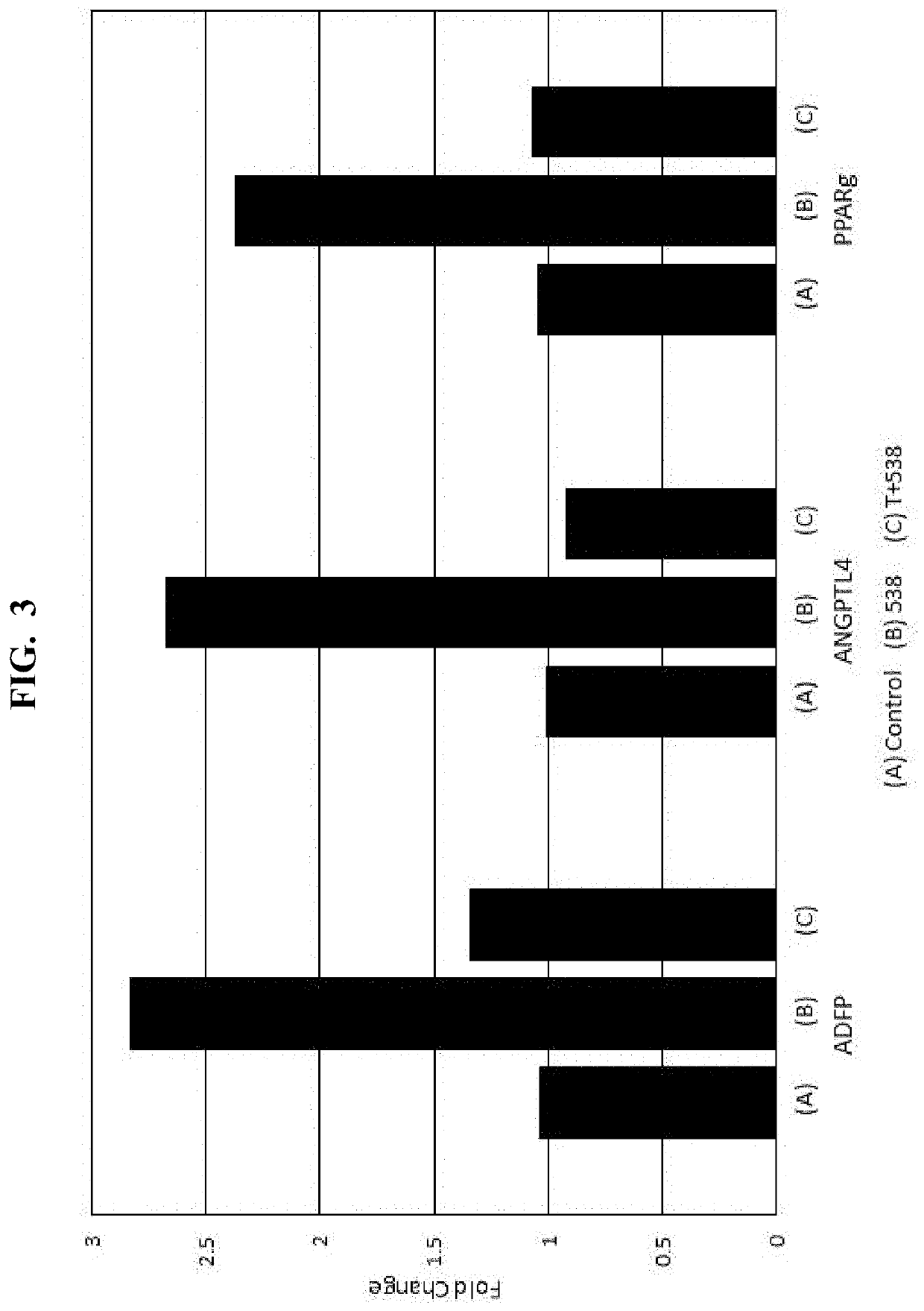Dry eye botanicals
a technology of botanical extracts and eye botanicals, which is applied in the direction of medical preparations, pharmaceutical delivery mechanisms, capsule delivery, etc., can solve the problems of corneal epithelium inflammation, corneal epithelium damage, and increased friction of the eye surface, and achieve the effects of not being able to meet the needs of conventional treatmen
- Summary
- Abstract
- Description
- Claims
- Application Information
AI Technical Summary
Benefits of technology
Problems solved by technology
Method used
Image
Examples
example 1
PPARγ Luciferase Reporter Assay
[0074]A library of botanical extracts is screened for PPARγ ligand binding domain (LBD) activity using a GAL4 / UAS luciferase reporter assay. More specifically, a PPARγ LBD is PCR amplified from full-length human PPARγ gene (MGC 5041, Open Biosystems, Cambridge, UK) and ligated into a modified pFN26A (BIND) vector (Promega, Madison, Wis.) to give a Gal4-PPARγ-LBD fusion protein construct. Chinese hamster ovary cells (CHO-K1) (ATCC, Manasas, Va.) are grown in F12K growth media (ThermoFisher, Waltham Mass.) supplemented with 10% FBS, penicillin / streptomycin, and amphotericin B in an incubator (37° C.; 5% CO2). The CHO-K1 cells are stably transfected with a pGL4.35 vector (Promega, Madison, Wis.) using Fugene 6 (Promega). Monoclonal cell lines are selected under Hygromycin treatment, and surviving clones stably transfected with the Gal4-PPARγ-LBD fusion protein construct with selection of stable cell lines from G418-supplemented media treated cells. Dually...
example 2
iated Lipid Synthesis Activity
[0077]Extracts of loquat and ginger identified in Example 1 are tested for their effect on lipid synthesis and PPARγ receptor activation using HMGECs. In particular, HMGECs are plated on collagen coated glass cover slips and treated with samples of each extract (varying concentrations in Media 1 with 0.1% DMSO), positive control (Rosi, 30 μM in Media 1 with 0.1% DMSO), and negative control (Media 1 with 0.1% DMSO) and incubated for 6 days. The treated cells are then fixed, stained with LipidTox Green, and the area of neutral lipid staining quantified. The results of the quantification are shown in Tables 3-6 below, with data expressed as percent positive control, in which the relative fluorescence units elicited by positive control cells exposed only to Rosi is set at 100%.
TABLE 3PPARγ-Mediated Lipid Synthesis Activity of Loquat Extract # 1TreatmentNucleiLipid% LipidSample (Amount)MeanSDMeanSDMeanSDVehicle1858.67117.230.2525620.2866090.0%7.2%Rosi (30 μM...
example 3
ion of PPARγ Response Gene ADFP, ELOVL4, ANGPTL4, & PPAγ
[0079]Loquat Extract #1 (“538”), and known phytochemical components thereof (oleanolic acid (“OA”); ursolic acid (“UA”)), are analyzed by real-time PCR (BioRad CFX96 Thermal Cycler, Hercules, Calif. (or equivalent)), to assess sample-induced expression of the PPARγ response genes ADFP, ELOVL4, and ANGPTL4 via mRNA quantification. In particular, samples are prepared and analyzed according to the procedure set forth in Jester et. al., “PPARγ regulates mouse meibocyte differentiation and lipid synthesis,” The Ocular Surface 14.4 (2016): 484-494, the disclosure of which is herein incorporated by relevance. The results of the quantification are shown in FIGS. 1-4, where the vertical (Y) axis of each plot corresponds to the fold change in response observed.
[0080]As shown, Loquat Extract #1 (“538”) increases mRNA of ADFP, ELOVL4, ANGPTL4 in a dose-dependent manner. To assess the effects on gene expression mediation via PPARγ signaling...
PUM
 Login to View More
Login to View More Abstract
Description
Claims
Application Information
 Login to View More
Login to View More - R&D
- Intellectual Property
- Life Sciences
- Materials
- Tech Scout
- Unparalleled Data Quality
- Higher Quality Content
- 60% Fewer Hallucinations
Browse by: Latest US Patents, China's latest patents, Technical Efficacy Thesaurus, Application Domain, Technology Topic, Popular Technical Reports.
© 2025 PatSnap. All rights reserved.Legal|Privacy policy|Modern Slavery Act Transparency Statement|Sitemap|About US| Contact US: help@patsnap.com



